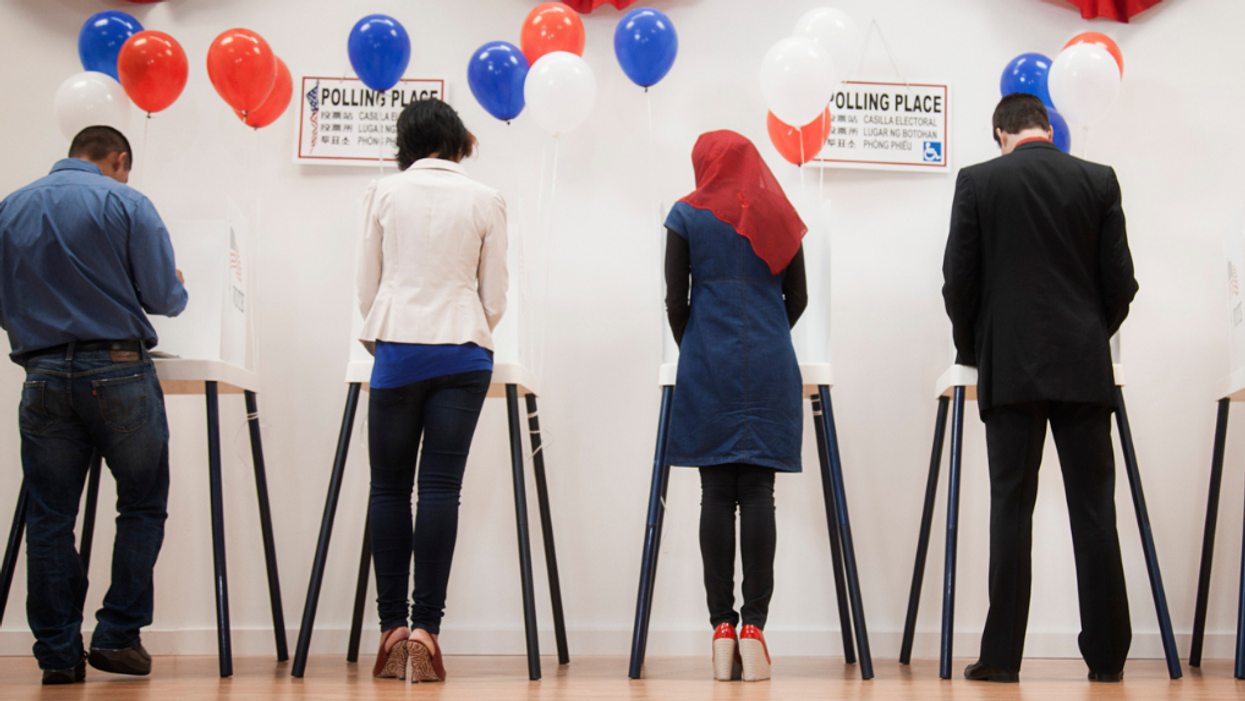Hill was policy director for the Center for Humane Technology, co-founder of FairVote and political reform director at New America. You can reach him on X @StevenHill1776.
The Spirit of 2024 may soon manifest as “the best of times and the worst of times.”
This could end up being the year that Donald Trump returns to the Oval Office and rules with a vengeful wrath, further eroding America’s democratic institutions and our standing in the world. And 2024 could end up being the breakout year for ranked-choice voting, the most popular political reform in the United States.
RCV is on the cusp of becoming a new norm for representative democracy in the United States. It has won 27 city and four statewide ballot measures in a row.
Ranked-choice voting has become so popular because it liberates voters to support their favorite candidates, knowing that if your top choice can’t win then your “runoff vote” will count for your second choice, then your third choice and so on. Voters can pick their favorite candidates instead of settling for the “lesser of two evils” or wasting votes on a candidate with no chance of winning.
RCV is establishing an impressive track record across the country, having been used in hundreds of elections by over 16 million voters in over 50 cities, counties and states. And now RCV is poised for its biggest year ever.
Across the nation, RCV will be on the ballot in four states ( Oregon, Idaho, Nevada and Colorado) as well as the nation’s capital, Washington DC. Here is a rundown of the different RCV campaigns this November.
Oregon
The Oregon effort, Measure 117, is exciting, as it was put on the November 2024 ballot by the Democratic-controlled Legislature. This is the first time in modern U.S. history that a state legislature has allowed voters to decide whether to use an alternative electoral method for its federal and statewide elections (including president and governor).
Nevada
Voters in Nevada will vote on Question 3, a ballot measure that combines RCV with a “top five” open primary. Voters already approved the original Question 3 in November 2022, but the political class, both Democrats and Republicans, have not made reform easy — reformers have to win twice at the ballot box. And unlike in Oregon, where the Democratic Party leadership led the effort to put RCV on the ballot, in the Silver State both the Democratic and Republican parties have the knives out for it.
If Question 3 passes, all candidates regardless of party would run on a single primary ballot and the top five vote-getters would advance to the general election, which then would be decided by RCV. Driving support for reform is the fact that Nevada is one of a number of states that has seen a sharp increase in the number of independent voters – about 41 percent are registered as either nonpartisan or with a minor party, which combined is greater than either registered Democrats (31 percent) or Republicans (28 percent).
Colorado
Like Nevada and Alaska, nearly half (47 percent) of Colorado’s active voters are registered as “unaffiliated,” and so their ability to participate in major party primaries — when most elections are decided — is restricted. RCV proponents have gathered enough signatures to place on the ballot Proposition 131, which resembles the Alaska model in that it would create a single primary for all parties, with the top four finishers going to a November runoff decided by RCV. Prop 131 is sweeping, applying to races for the Senate, the House of Representatives, governor, attorney general, state legislature, secretary of state and more.
Like in Nevada, Prop 131 is opposed by both the Democratic and Republican parties, as well as MAGA gun-toting Rep. Lauren Boebert (R). It also has drawn opposition from the progressive Working Families Party, which apparently views RCV as a threat to its efforts to get fusion voting in Colorado. RCV is already used in Boulder and other Colorado cities, so voters will decide on whether to use it at the state level.
Idaho
In the Gem State, Proposition 1 is also a top-four-RCV combo measure. While it’s a heavily conservative state, like in Alaska many of those conservatives are not registered as Republicans but as independents — over a third (35 percent) of Idaho voters are registered as “unaffiliated,” by far the second-largest affiliation in Idaho, nearly three times more numerous than Democratic Party registration. Yet these voters are not allowed to participate in the GOP’s closed primary, where virtually all elections are decided. A coalition of independents and moderate Republicans, including Republicans for Open Primaries and Reclaim Idaho, collected enough signatures to qualify a voter initiative.
High-profile GOP leaders are directing this effort, including former Gov. Butch Otter and dozens of past state lawmakers and officials. These leaders believe a top four primary combined with RCV would help defeat extreme MAGA candidates who have successfully ousted more moderate GOP legislators in low-turnout “plurality wins all” primaries. This campaign, along with the top-four-RCV repeal effort in Alaska this November, is an important battle for the heart and soul of the Republican Party, and it will create a model for other conservative states.
Washington, D.C.
This is an exciting campaign in our nation’s capital, where if successful federal leaders will be able to observe up close the benefits of ranked ballots. Independent voters — about 16 percent of the electorate — have long been shut out of the partisan primaries in D.C. This year, in one city council district the winner of the Democratic primary, which had 10 candidates, garnered less than 24 percent of the vote. Spoiler candidates split the vote and the winner saw 76 percent of their constituents vote for other candidates.
Initiative 83 would allow independent voters to participate in the party primary of their choice, using RCV to rank up to five candidates. The Washington Post has endorsed RCV as a way to improve local elections, citing the reform’s success in other cities.
Reform efforts for better representative democracy using ranked-choice voting elections have been ongoing for over three decades. In November, we will see whether 2024 is the year that representative democracy in the United States takes a giant step forward toward a brighter future, or a troubling step backward toward authoritarianism.
The stakes couldn’t be higher.




















